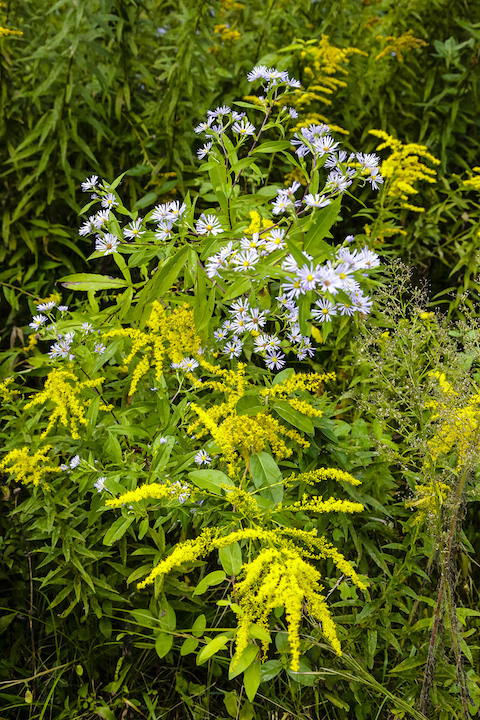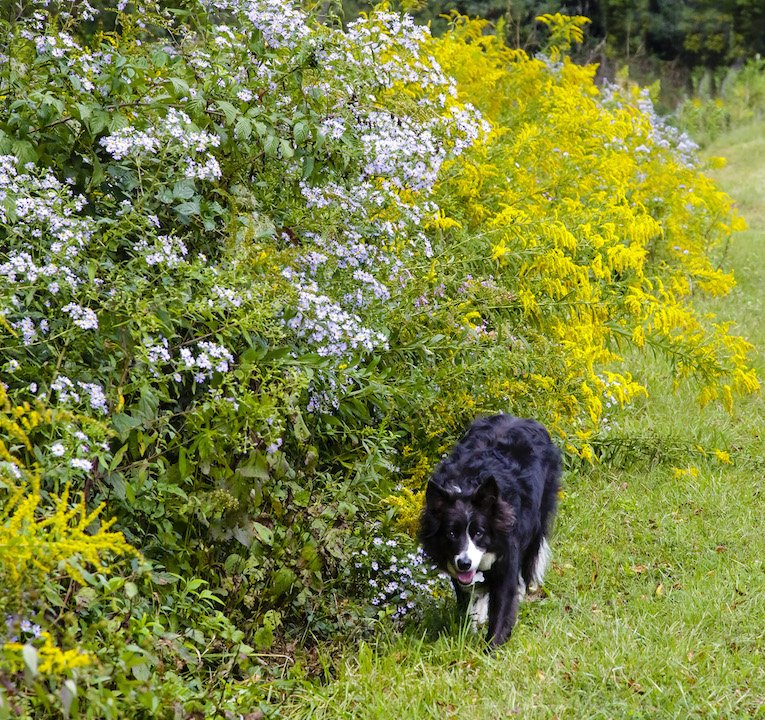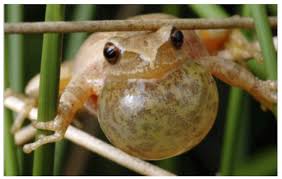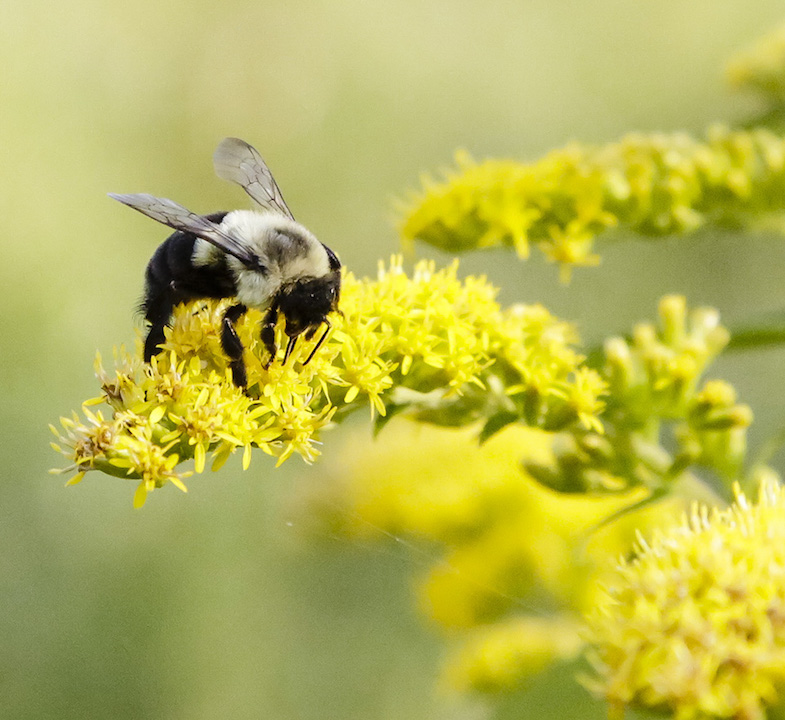Plant of the Month
by Linda Martinson
Blue Ridge Naturalist
The late summer/early fall flowers are bountiful this year because we had plenty of rain through mid-summer followed by ample sunshine into fall. As usual, we can’t miss the goldenrods with their brilliant color! They seem to be blooming along all the roads, in all the ditches and across every meadow, their thick clusters of bright golden flowers waving good-by to summer.
Goldenrods are short-day (i.e., blooming from late summer into fall), native plants of the genus, Solidago, that reproduce through its roots, bulb, stems and by its seeds. There are 120+ species of goldenrods belonging to the aster family, Asteraceae, a large family of tough, herbaceous and adaptable perennial species that spread easily into varied locations—there are even woodland goldenrods—and also crossbreed fairly easily with other plants. Goldenrods are mostly native to North America, including Mexico, but a few species are native to Eurasia and South American. Some species from North America have been introduced to other parts of the world, mostly in Europe.

Goldenrods with the aster cousins.
Goldenrod plants are perennials growing from rhizomes, a continuously growing underground horizontal stem with lateral shoots. Their stems range from growing along the ground to curving upward to standing erect, and vary in height from a few inches to three feet or more, and each individual flower head is about 1/8” long and wide. Most species of goldenrod have several independent horizontal branches, but often the upper part of the plant has multiple attached branches. The stems are characteristically long and woody with widely-spaced clusters of distinctive and rather elegant small yellow flowers that are grouped into complex compound arrangements of blossoms.
Do you think you or someone you know may be allergic to goldenrod or have hay fever from its pollen? Wrong! No one can be allergic to goldenrods because it is pollinated only by insects, so it doesn’t produce too much pollen and what pollen it does produce is too heavy and sticky to be blown away. Goldenrod is often blamed for causing allergies and hay fever because it blooms at the same time as ragweed (Ambrosia sp.) which, because it is a wind-pollinated plant producing excessive light, fly-away pollen, does cause hay fever and other allergic reactions.
Although they are quite common and even invasive in some areas, goldenrods are not to be taken for granted because they are remarkable plants. Not only are the flowers distinctive and showy, all the parts of goldenrod plants that are above ground are edible. The flowers make stand-out garnishes on salads, and the leaves can be used fresh or dried to make tea. The leaves also can be cooked like spinach or added to soups, stir-fry dishes or casseroles.

“Are you sure these goldenrod plants are edible?”










